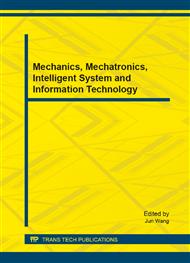[1]
Sjoerd W. Rienstra, Nonlinear Free Vibrations of Coupled Spans of Overhead Transmission Lines, Journal of Engineering Mathematics. 53(3) (2005) 337-348.
DOI: 10.1007/s10665-005-9011-4
Google Scholar
[2]
C. B. Gurung, H. Yamaguchi, T. Yukino, Identification of large amplitude wind-induced vibration of ice-accreted transmission lines based on field observed data, Engineering Structures. 24 (2002) 179–188.
DOI: 10.1016/s0141-0296(01)00089-x
Google Scholar
[3]
J. L. Lilien, D. G. Havard, Galloping data base on single and bundle conductors, prediction of maximum amplitudes. Prediction of maximum amplitudes, IEEE Trans on Power Delivery. 15(2) (2000) 670-674.
DOI: 10.1109/61.853003
Google Scholar
[4]
O. Chabart, J. L. Lilien, Galloping of electrical lines in wind tunnel facilities, Journal of Wind Engineering and Industrial Aerodynamics. 74-76 (1998) 967-976.
DOI: 10.1016/s0167-6105(98)00088-9
Google Scholar
[5]
A. S. Richardson, A study of galloping conductors on a 230 kV transmission line, Electric Power Systems Research. 21(1) (1991) 43-55.
DOI: 10.1016/0378-7796(91)90036-m
Google Scholar
[6]
M. A. Baenziger, W. D. James, B. Wouters, L. Li, Dynamic loads on Transmission Line structures due to galloping conductors, IEEE, Transactions on Power Delivery. 9(1) (1994) 40-49.
DOI: 10.1109/61.277678
Google Scholar
[7]
Y. M. Desai, P. Yu, N. Popplewell, A. H. Shah, Finite element modeling of transmission line galloping, Computrrs & Strucrum. 57(3) (1995) 407-420.
DOI: 10.1016/0045-7949(94)00630-l
Google Scholar
[8]
Kim, Haeyoung, Mechanism of wake galloping of two circular cylinders, A Dissertation Submitted. (2009).
Google Scholar
[9]
Xiaohui Xiao, Gongping Wu, Hua Xiao, Jinchun Dai, An Inspection Robot for High Voltage Power Transmission Line and Its Dynamics Study, Service Robot Applications. (2008) 331-342.
DOI: 10.5772/6050
Google Scholar
[10]
Xiao-hui LIU, Bo YAN, Hong-yan ZHANG, Song ZHOU, Nonlinear numerical simulation method for galloping of iced conductor, Applied Mathematics and Mechanics. 30(4) (2009) 489–501.
DOI: 10.1007/s10483-009-0409-x
Google Scholar
[11]
Y. M. Desai, P. Yu, A.H. Shah, N. Popplewell, Perturbation-based finite element analyses of transmission line galloping, Journal of Sound and Vibration. 191(4) (1996) 469-489.
DOI: 10.1006/jsvi.1996.0135
Google Scholar
[12]
M. Müller, Z. Müller, J. Tlustý, Overhead Line Mechanical Behaviour - Dynamic Model, Przegląd elektrotechniczny. 89 (2013) 221-224.
Google Scholar
[13]
F. N. Shklyarchuk, A. N. Danilin, Jean-Louis Lilien, D. V. Snegovskiy, A. A. Vinogradov, M. A. Djamanbayev, Nonlinear aeroelasting vibrations and galloping of iced conductor lines under wind, 7th Internation Symposium on Cable Dynamics. (2007).
Google Scholar
[14]
O. A. Ivanova, On Numerical Simulation of Conductor Galloping Using Vortex Element Method, Proceedings of XLI International Summer School–Conference APM. (2013) 269-275.
Google Scholar
[15]
Muhammad Bilal Waris, Takashi Ishihara, Muhammad Waheed Sarwar, Galloping response prediction of ice-accreted transmission lines, The 4th International Conference on Advances in Wind and Structures. (2008) 876-885.
Google Scholar
[16]
Kermani, Majid, Farzaneh, Masoud and Kollar, László E. The Effects of Wind Induced Conductor Motion on Accreted Atmospheric Ice, IEEE Transactions on Power Delivery. 28(2) (2013) 540-548.
DOI: 10.1109/tpwrd.2013.2244922
Google Scholar
[17]
Bin Liu, KuanJun Zhu, XinMin Li, and XuePing Zhan, Hysteresis Phenomenon in the Galloping of the D-Shape Iced Conductor, Hindawi Publishing Corporation Mathematical Problems in Engineering. (2013) 1-11.
DOI: 10.1155/2013/784239
Google Scholar
[18]
Li Xinmin, Zhu Kuanjun, Liu Bin, Research of Experimental Simulation on Aerodynamic Character for Typed Iced Conductor, AASRI Conference on Power and Energy Systems. 2 (2012) 106-111.
DOI: 10.1016/j.aasri.2012.09.021
Google Scholar
[19]
Xin Wang, Wen-Juan Lou, Numerical approach to galloping of conductor, The Seventh Asia-Pacific Conference on Wind Engineering. (2009).
Google Scholar
[20]
Mohammed Ali, Mustafa Arafa, Mohamed Elaraby, Harvesting Energy from Galloping Oscillations, Proceedings of the World Congress on Engineering. 3 (2013) 2053-(2058).
Google Scholar
[21]
V. I. Gulyaev, V. A. Bazhenov, S. L. Popov, Applied problems in the theory of nonlinear oscillations of mechanical systems, Мoscow, «Vysshaya Shkola», 1989, p.384.
Google Scholar


